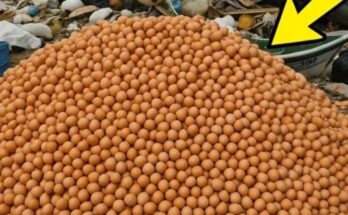Whether you’re an athlete pushing your limits, someone recovering from surgery or injury, or simply committed to a healthy lifestyle, one thing is universally important: giving your body the tools it needs to repair and rebuild. At the heart of this process is protein — a powerhouse nutrient that supports tissue repair, recovery, and overall resilience.
Let’s dive into how protein works to heal the body, how much you actually need, and when it matters most to consume it.




Why Protein Matters for Repair and Recovery
Protein is made up of amino acids — the building blocks of muscle, skin, tendons, and nearly every structure in the body. When your body experiences stress, whether from intense exercise or physical trauma, it triggers microscopic damage to tissues. That might sound alarming, but it’s actually a normal and necessary process. The damage acts as a signal to the body to rebuild stronger than before — but only if the right nutrients are available.
This is where proper protein intake comes in. It provides the raw materials your body needs to:
- Repair microtears in muscle tissue after workouts
- Heal wounds and incisions post-surgery or injury
- Support immune function, which is vital for recovery
- Maintain lean body mass, especially when recovering while immobile
Simply put, without enough protein, your body cannot repair itself efficiently — and recovery is slowed or impaired.
How Much Protein Do You Really Need?
The “right” amount of protein varies depending on factors like age, weight, activity level, and recovery goals. The general Recommended Dietary Allowance (RDA) for protein is 0.8 grams per kilogram of body weight per day for the average sedentary adult. However, this baseline is not nearly enough when your body is actively repairing itself.
Here are some practical guidelines based on different scenarios:
1. Active Individuals & Athletes
For those engaging in regular strength training, endurance sports, or high-intensity interval workouts, the sweet spot is usually around 1.4 to 2.0 grams of protein per kilogram of body weight per day. This level supports ongoing muscle recovery and promotes lean muscle growth.
2. Injury or Surgery Recovery
Recovery from injury, illness, or surgery increases the body’s protein demand. Research suggests that 1.5 to 2.2 grams per kilogram can help preserve muscle mass and accelerate tissue healing during these periods.
3. Older Adults
With age, the body becomes less efficient at processing protein. Older adults often benefit from slightly higher intakes — around 1.2 to 1.5 grams per kilogram — to maintain muscle and support healing.
Always consult a medical or nutrition professional for personalized recommendations, especially during injury recovery or medical treatment.
When You Eat Protein Matters
Not only is total protein intake important, but timing plays a role too — especially when it comes to muscle repair.
Protein After Workouts
Consuming protein shortly after exercise — ideally within 30 to 60 minutes — helps kickstart muscle protein synthesis, the process by which muscles rebuild and grow. This window is often referred to as the “anabolic window,” and while the exact timing is still debated, the idea holds: your body is primed to use nutrients right after exertion.
A simple post-workout meal might include:
- A protein shake with whey or plant-based protein
- Grilled chicken with brown rice
- Eggs and whole-grain toast
- Greek yogurt with fruit
These meals provide both protein and carbohydrates, which together enhance recovery by replenishing glycogen stores and promoting muscle repair.
Spacing Protein Throughout the Day
Spreading protein intake evenly throughout the day (rather than consuming it all at dinner) has also been shown to improve muscle protein synthesis. Aim to include 20–30 grams of high-quality protein in every meal, along with smaller snacks.
Best Sources of Protein for Recovery
Not all proteins are created equal. Some provide all the essential amino acids your body needs — these are known as complete proteins. Others may lack one or more essential amino acids but can still contribute to overall protein needs when eaten as part of a varied diet.
Top Animal-Based Protein Sources
- Eggs – One of the most bioavailable sources of protein
- Chicken breast – Lean, high in protein
- Turkey – A great lean option for muscle repair
- Fish (especially salmon, tuna, cod) – Rich in omega-3s and protein
- Greek yogurt – Also contains probiotics for gut health
- Cottage cheese – High in casein protein, which digests slowly
- Whey protein – A fast-absorbing protein ideal post-exercise
Top Plant-Based Protein Sources
- Lentils and beans – Also packed with fiber
- Chickpeas – Versatile and protein-rich
- Tofu and tempeh – Complete plant proteins
- Quinoa – A grain that contains all nine essential amino acids
- Chia seeds – Small but mighty in protein and omega-3s
- Plant-based protein powders – Good for those on the go
For vegetarians and vegans, combining different sources — like beans and rice — helps ensure a complete amino acid profile.
Protein Supplements: Are They Necessary?
While whole foods are always the foundation of good nutrition, protein supplements can be a convenient way to meet higher demands during recovery or training. They’re especially helpful:
- After workouts for quick absorption
- When appetite is low due to illness or injury
- For those with busy lifestyles
Look for protein powders with minimal added sugars and artificial ingredients. Whey isolate is fast-absorbing and high-quality, while casein digests slowly — perfect before bed to support overnight recovery. Vegan blends (like pea and rice protein) offer complete amino acids as well.
Signs You May Not Be Getting Enough Protein
If you’re not consuming enough protein, your body will eventually let you know. Common symptoms include:
- Slower healing from injuries
- Constant fatigue or muscle soreness
- Loss of muscle mass
- Frequent illness or infections
- Brittle nails, thinning hair, or skin issues
These signs suggest your body is struggling to keep up with its repair needs. Increasing your protein intake can often help reverse these symptoms and improve recovery outcomes.
Final Thoughts
Protein is far more than just a buzzword in the fitness world. It’s a critical nutrient your body relies on for healing, repair, and overall strength. Whether you’re recovering from a tough workout, healing from an injury, or simply trying to stay strong and energized, focusing on proper protein intake makes a real difference.
Aim for quality sources, spread your intake throughout the day, and pay attention to your body’s signals. With the right nutrition in place, recovery becomes not just faster — but more complete.
Remember, healing isn’t just about rest. It’s about fueling the process from within.



